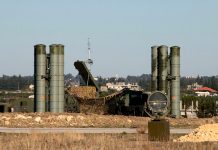
In the predawn hours of June 13, 2025, Israel launched a significant series of airstrikes across Iran, striking key nuclear facilities and military sites in a dramatic escalation of tensions between the two countries. The operation, which involved dozens of Israeli Air Force jets — including its advanced F-16I Sufa — marked a major turning point in their longstanding conflict.
Explosions were reported by local media across Tehran, reflecting the power of the attacks. An Israeli military official, speaking on condition of anonymity, said the strikes were based on credible information indicating Iran was preparing an attack against Israel. The United States was kept informed but stayed out of the action, with Secretary of State Marco Rubio emphasizing that the strikes were a unilateral move by Israel.
Defense Minister Israel Katz subsequently placed the country under a state of emergency and described the attacks as a preemptive, multilayered operation employing drones, fighter jets, and precision-guided munitions. The F-16I Sufa, equipped with advanced weapons and guidance systems, played a pivotal role in delivering a powerful and calibrated assault while minimizing collateral damage.
This escalation comes amid a longstanding showdown stemming from Iran’s 1979 Islamic Revolution and its policy of arming and training groups hostile to Israel, from Hezbollah in Lebanon to Hamas in Gaza. Israel, meanwhile, sees Iran’s growing nuclear capabilities as a significant threat — prompting repeated attacks to undermine Iran’s progress toward a nuclear weapon.
Previous operations, including a 2018 strike on Iran’s military facilities in Tehran and the 2024 attack on Iran’s consulate in Damascus — which resulted in the deaths of 16 people, among them high-profile Islamic Revolutionary Guard Corps officers — kept tensions high and paved the way for further escalation. Iran responded with its own drone and missile attacks in what it called Operation True Promise, although many were intercepted by Israeli defenses alongside its allies.
Israel’s subsequent operations, notably its “Operation Days of Repentance” in October 2024, disrupted Iran’s ability to produce weapons and defend its airspace. This new attack, labeled “Operation Rising Lion” by Prime Minister Benjamin Netanyahu, was meant to further undermine Iran’s nuclear enrichment program and reduce its ability to pose a direct threat.
Intelligence sources say Iran was preparing its own attack, prompting Israel’s decision to move first. The strikes involved multiple formations of F-16I Sufa jets, supported by drones and a range of precision-guided munitions, against a spectrum of targets — from command centers to facilities used for nuclear enrichment. Local media in Iran initially downplayed the attacks, but later acknowledged the extensive damage.
The Israeli Defense Forces (IDF) later released a brief statement noting that all their aircraft had safely returned to base. The F-16I Sufa — a custom variant of Lockheed Martin’s F-16 — is a powerful platform for both air superiority and ground attack, featuring a range of advanced systems, conformal fuel tanks for extended range, and a sophisticated radar suite.
The Sufa’s capabilities enable it to carry a heavy and versatile payload, employing weapons such as GBU-39 Small Diameter Bombs and AIM-120B AMRAAMs. According to photos circulated online, each jet was loaded with up to eight GBU-39s and two air-to-air missiles — a combination designed to maximize attack range while retaining defensive power.
The GBU-39, manufactured by Boeing, is a small, precision-guided bomb designed to destroy fortified targets while minimizing collateral damage, and it can be deployed from a considerable distance. The AIM-120B AMRAAM, meanwhile, is a medium-range, radar-guided missile used for air-to-air combat, adding a defensive dimension to the operation in case Iran’s fighter jets challenged the strikes.
While many air forces around the world employ F-16s, the Sufa stands out due to its specialized modifications, advanced avionics, and extensive range. Iran’s own air force, meanwhile, relies on older F-14s and MiG-29s — a technological gap that further tilts the balance in Israel’s favor.
The Sufa’s custom innovations, from its conformal fuel tanks extending its range to its advanced electronic suites, enable its crews to carry out sophisticated operations with confidence. The combination of range, power, and discretion makes the Sufa a crucial tool for delivering high-impact attacks while avoiding extensive collateral damage.
Some Israeli pilots describe their aircraft as turning from “an outdated platform into a sophisticated machine” — a transformation made possible by cutting-edge technology. This advantage proved decisive in navigating Iran’s defenses, which includes Russian S-300 systems and a range of radar-guided weapons.
The attack was launched from bases within Israel — likely Ramon or Tel Nof — with the jets traversing nearly 2,000 kilometers to reach their targets. In-flight refueling supported their operations, while attacks were carefully calibrated to destroy Iran’s nuclear facilities and command structures while avoiding civilian harm.
While Iran’s defenses tried to respond, employing surface-to-air batteries and other measures, there were no reports of Israeli losses. Drones and additional munitions were used alongside the F-16I formations, adding depth to the attack. The strikes successfully avoided causing significant civilian casualties while delivering a powerful message.
In the aftermath, oil prices jumped nearly 12% due to growing worries about stability in the region, while the U.S. stock market fell amid growing uncertainty. Iran’s state media hinted at a potential retaliation, although none had yet been launched. U.S. officials stressed their non-involvement and called for de-escalation.
This attack, following Iran’s previous strikes and its growing nuclear capabilities, underscores the growing danger of a dramatic escalation in the conflict — a showdown that could spiral across the Middle East. Iran’s ability to respond with ballistic or drone attacks against Israel, or its growing reliance on proxy groups like Hezbollah and the Houthis, adds additional volatility to the situation.
The international community, meanwhile, finds itself wrestling with difficult questions about whether surgical attacks can sufficiently dismantle Iran’s nuclear ambitions or if they will instead contribute to a broader conflict.
Some European powers, while critical of Iran’s nuclear trajectory, are urging calm and diplomatic negotiations instead of further escalation. Russia and China, both with strong ties to Iran, may respond to the strikes by strengthening Iran’s defenses or diplomatic leverage, adding another layer of complexity for the United States and its allies.
The attack also resonates within Israel itself, where many view the strikes as a decisive demonstration of their ability to protect their country, while others raise concerns about the long-term ramifications and the possibility of fueling further conflict. The government, under Prime Minister Netanyahu, may see its credibility enhanced by a successful operation — but the risk of escalation hangs heavy.
The F-16I Sufa’s performance and its ability to carry a range of sophisticated munitions underlines its growing role in Israel’s defense strategy. The aircraft’s conformal fuel tanks enable long-range missions, while its advanced guidance and electronic suites enable greater accuracy and survivability.
This, in turn, sets a precedent for future operations against Iran, adding a new dimension to their ongoing conflict. The GBU-39’s small size and ability to destroy fortified targets, alongside the defensive capabilities provided by the AIM-120B, reflect a careful blend of offense and discretion in the face of growing danger.
As Iran assesses its options for retaliation, the world waits to see whether a new escalation will follow — or if diplomatic channels can ease tensions. The careful balance between force and diplomacy may determine whether this conflict crosses the threshold into a wider war.





